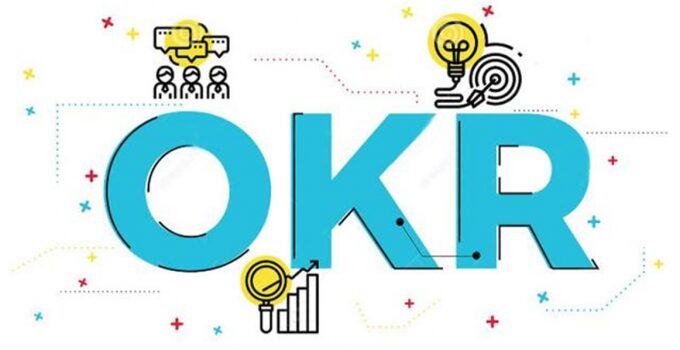Utilizing OKRs is an important decision by businesses to increase worker efficiency, improve intra-company communication, boost sales, enhance productivity, and align every team member’s goals within an organization. OKRs help prevent any miscommunication and lack of accountability between sectors by keeping the entire company organized and on the same page.
By creating goal-oriented OKRs, businesses struggling financially can turn their luck around. Sometimes, poor decisions from management staff lead to an unstable and low-quality business that stems from disorganization, lack of communication, and low worker morale.
OKRs can help improve the quality and stability of business by getting everyone on the same page. Let’s learn about the importance of business stability, how to diagnose your company’s future stability level, and OKR examples to aid your failing company.
Read More To Learn About Business Stability
A business’s stability is the ability or capacity to withstand a temporary problem. A business problem could be from reducing capital to a loss of an important client when securing a vital deal. Analyzing your influx of cash, income, profit, and running through a variety of negative scenarios can help give you an idea of the quality and stability of your business.
While weather forecasts inform us of the current weather conditions and their progression, business plans work in a similar way. It gives readers an idea of how the company will operate in order to achieve its goal. A business plan is a formally written document that outlines how a company will function in order to meet its goals and the activities it will take to achieve them. At Template.net you can find all kinds of business plans, agreements, etc in all kinds of formats.
How to Analyze Your Financial Stability

Source: pexels.com
Determining the financial stability of your business is key to predicting the longevity of your company. Let’s see the steps to analyzing the status of your company.
- Review your overhead expenses and determine the costs per unit of your production. Calculate your profit margin per unit and your profit margins based on lower sales to analyze at what volume of sales you will no longer receive a profit. You can use OKRs from the bottom up of your corporation to help develop a profitable strategy.
- Create an influx of cash diagrams and profit budgets that show when payments are due and when you will be receiving payments. Creating a budget that contains expenses and sales can prepare you for when it is time to pay expenses. By analyzing your budget, you can determine if you need to decrease spending in certain months or obtain a credit line. Read more to see whether or not you need to strengthen your accounts to fix your financial stability.
- Review your customer list and rank your customers by volume of sales. Calculate the effect of losing a customer and your ability to stay in business. Re-calculate your production and overhead costs based on customer loss, creating a plan to reduce dependency on certain accounts. Read more to see how to remedy your financial instability issues when it comes to sale levels.
- Re-do your annual budget to determine your ability to survive after a deduction of sales. Determine if you will make a profit with reduced sales, creating a budget that automatically triggers spending changes if your sales decrease.
- Discuss the effects of firing key employees. Calculate the costs necessary to bring a replacement on board for an employee and the loss of productivity’s effect on the company. Read more to see why having a detailed written job description is the next step in reducing company costs.
- Examine your lines of credit and decide if you can replace the credit lines for your business. Create a plan for operating without credit to see how long you can continue to run your business.
Read more to learn how setting OKRs can help a business struggling with financial instability.
How OKRs can help a financially unstable business

Source: boc-group.com
Identify a defective product in the development lifecycle
A business can enhance the product quality and services provided to customers and clients by using result-driven OKRs to enable the business to find defects in the initial stages of product development.
Businesses should use the Quality Assurance guidelines to reduce the defect rate in the products and services offered to consumers, ensuring the quality of the product is as high as possible when the client receives it. Read more to see how OKRs help the production of high-quality products using specific metrics.
Products and services are created using quality metrics
OKRs can help individuals ensure the products meet specific quality metrics and standards during the production phase. Specific quality metrics are created by the business to make sure the corporation follows the specific protocols laid out to ensure uniformity in the services and products.
Processes are optimized for enhanced quality
Process Optimization is a crucial factor for businesses to consider when delivering quality products using OKRs. Using new processes, enhancing existing processes, increasing automation, and reducing waste are crucial to adhering to quality protocols. Read more to see how OKRs can help eliminate any wasted products.
Reduce bugs in the products
Identifying and resolving any errors during the production process can be very effective in sticking to the quality metrics set forth by the management staff of a business during the OKR creation process. Production should not contain any glitches, ensuring the quality of products is always met during each production cycle.
OKR Examples

Source: freepik.com
Read more to see some of the best OKR examples per business category.
Technology OKR example:
- Improve the quality of releases
- Reduce bugs to 5 on average
- Increase code unit test cover to 40%
- Increase team members testing the coding from 1 to 4 people before release
Product OKR Example:
- Research, analyze, and understand what non-users think of the product
- Sales team conducts 40 phone interviews per month
- Support team conducts 40 phone interviews with people with accounts
- Design team conducts 30 web-based user testing with new and old users
HR OKR Example:
- Improve corporate culture through enhanced communication
- Create a 2-way closed-loop feedback and obtain 35 entries
- Create a weekly employee satisfaction survey
- Management staff launches a monthly all-hands on-deck Q&A meeting
Conclusion
Using OKRs can be an effective way to remedy any financial instability and quality reduction in businesses. By identifying the steps needed to evaluate your company’s stability level, you can read more to see the benefits of using OKRs to aid in quality assurance.







